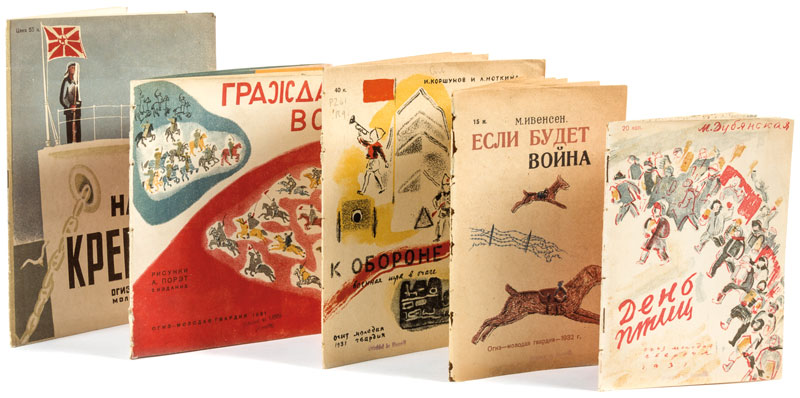The Art of the Book
Soviet propaganda meets the avant-garde aesthetic in Leslie Hindman’s upcoming sale By Emily Byrd Emily Byrd lives in North Carolina and is the editorial cordinator of special publications at Journalistic, Inc.
Veering from its traditional April book sale, Leslie Hindman Auctioneers is blending its art and literary offerings with the May 5 sale, “The Art of the Book.”
The collection centers around works that use the form of the book itself as art, a style famously deployed by Dadaist, Futurist, and Constructivist artists throughout the twentieth century. Some key works feature the art of pioneers such as Picasso and Miro, while others represent intriguing work from contemporary artists of just the past few decades.
The foundation of this particular sale, however, is a collection of Soviet Constructivist children’s books procured from the University of Chicago library.
The books—or more accurately, short booklets—were mass-produced after the Russian Revolution in the middle of Stalin’s five-year plan as part of a national publishing project.
The works are replete with propaganda pertaining to the making of a new society, a new man, and a new ideology centered around collective efforts, and show with astounding clarity the connection between radical socialism and experimental aesthetics.
These eight- to ten-page booklets were distributed for home use and in-school lessons, and used vivid imagery to depict the power of collective action. For instance, one booklet illustrates children working together as a group to take a tree branch and transform it into a toy for common use.
“The subjects reflect the ideals of the New Regime,” said director of consignments, Mary Williams Kohnke. “The artists, who were employed by the Soviet government, are really going along with the ideals of production and labor. But what’s interesting is that it’s the artists’ forms, more than the Soviet ideals they portrayed, that clearly lasted.”
It’s also remarkable that Leslie Hindman was able to obtain copies of the booklets, which were either stapled or sewn together, that had themselves lasted the test of time and survived in good condition.
One of the most prominent authors in this remarkably preserved collection is the poet Samuil Marshak, who Maxim Gorky once referred to as “the founder of Russia’s children’s literature.”
Despite his employment by the state, Kohnke said Marshak’s ability to bring across his distinct poetic form in an imaginative format is one of the most engaging aspects of the collection.
There’s also a striking sense of continuity between these books and the more modern works of the collection.
“In terms of [the children’s books’] forms, I see a lot of reflections in the contemporary artists’ books and the avant garde works,” Kohnke said. “They’re playing with visual poetry, and there’s no sense of narrative space. Instead, that background is replaced with simple forms and bright colors—things that will catch your eye and inspire imagination.”
There are also parallels between the Soviet lit and the contemporary artists’ books in that they have clear, if disparate, agendas. Kohnke said that many of the newer books particularly tout feminist ideology.
Because of the broad subject matter, intensely engaging visuals, and generally modest price point, Kohnke expects this sale to bring in a diverse group of buyers, while bringing art collectors and rare book aficionados into the same room—creating an exciting environment for everyone involved.
Emily Byrd lives in North Carolina and is the editorial cordinator of special publications at Journalistic, Inc.








